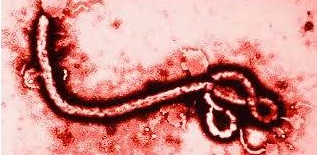
No cases of Ebola have been diagnosed in Israel at this time, but despite precautions, no one can guarantee that a person arriving by air at Ben Gurion Airport or by land over one of the borders will not be carrying the Ebola virus. About 300 persons come to Israel every year from Liberia, Sierra Leone and Guinea, the three West African countries where there is active transmission of Ebola.
What would happen if a patient with Ebola came to the emergency room at Hadassah?
A swift and comprehensive response would be necessary.
Hence, a trial run took place this week at Hadassah’s Ein Kerem campus to make sure that the medical center is fully prepared.
Twenty five key Hadassah staff persons met to deal with the logistics of providing treatment without endangering staff and patients. Patient suspected of this contagious disease need to be isolated, examined by doctors and nurses wearing protective clothing, treated, and transferred to national isolation centers. Ebola hemorrhagic fever must be treated with strict attention to barrier isolation. All body fluids contain infectious viruses and need to be handled with great care. That means that although the virus isn’t air-born, a cough or sneeze could carry it if you were nearby.
In Israel, all patients suspected of having Ebola should be immediately transferred to a specialized unit.
Hence, the discussion was where to examine and triage suspected patients. Should an external shelter be built or would one of the hospital rooms best serve this purpose? If a tent is created, what will happen in the rain? What if a patient is already very sick and needs an infusion? How can this best be done outside of the regular emergency center? Where will staff dress, and who will assist in putting on the complex cover gear? And—a critical phase that is sometimes overlooked–where and how will the contaminated clothing be removed?
These are among the many questions that were discussed by the Hadassah team, led by Ein Kerem Director Prof. Yoram Weiss. Infectious disease specialists, emergency and intensive care nurses, logistics and backroom staff brainstormed and undertook to solve these issues in an open discussion. Although there are Ministry of Health guidelines for dealing with Ebola, the specific procedures need to be tailored to the medical facility and the staff needs to practice enough to avoid any mishaps.
The Hadassah team decided on an isolation room and specific areas for dressing and undressing.
Team members demonstrated the procedures for donning the suits. “I have worked with infectious diseases in Israel and in Third World countries, but I have never before had to wear such protective coverage,” said Professor Dan Engelhard, an infectious disease specialist. Working for a long time in such clothing takes getting used to.”
Dedicated teams will practice using the protective clothing and going through the procedure so that all shifts are covered.
Said Professor Weiss, “We hope that this preparation will remain theoretical, but we are confident that we will be able to handle whatever challenges come our way.”
In the meantime, the students of the International Masters of Public Health program at the Braun School of Public Health include a physician from Sierra Leone. Although she had no symptoms, because she is a physician, she has worked in health centers where Ebola patients were treated, she volunteered for three weeks of isolation before the academic year began this year. Because of the need for public health workers in Ebola active areas of Africa, the school is weighing the possibility of teaching by Skype, according to Dr. Yehuda Newmark, Associate Professor of Epidemiology and Director of the Hebrew University-Hadassah Braun School of Public Health and Community Medicine. The Braun School is recognized by the world Health Organization (W.H.O.) as a Collaborating Center for Capacity Building in Public Health.
